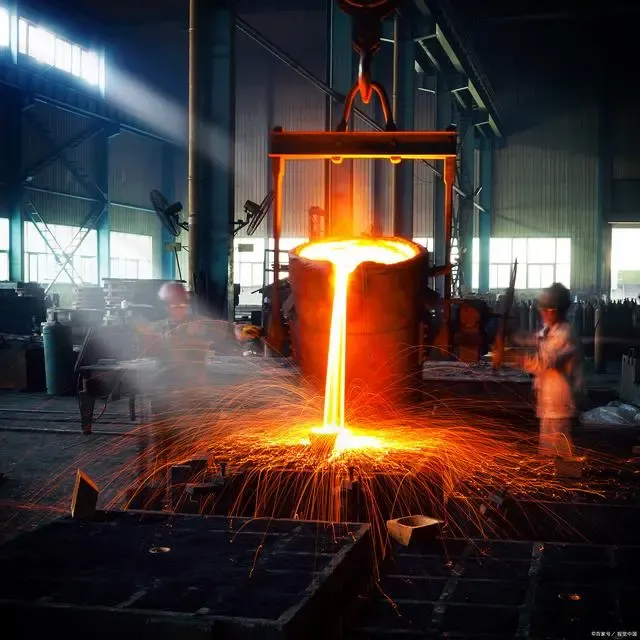Mobile:+86-311-808-126-83
Email:info@ydcastings.com
melting and casting aluminum
Melting and Casting Aluminum A Comprehensive Overview
Aluminum has become one of the most versatile materials used in various industries, including automotive, aerospace, packaging, and construction. One of the key processes that enable the use of aluminum is melting and casting. This technique not only allows for the transformation of aluminum into different shapes but also optimizes its unique properties for specific applications. In this article, we will explore the melting and casting of aluminum, delving into its processes, methods, and benefits.
Understanding Melting of Aluminum
Melting is the initial step in the casting process of aluminum. Pure aluminum has a melting point of approximately 660 degrees Celsius (1220 degrees Fahrenheit). When it is heated to this temperature, it transforms from a solid state to a molten liquid that can be molded into various shapes. The melting of aluminum can be accomplished through several techniques, including electric arc furnaces, induction furnaces, and crucible melting.
Electric arc furnaces are commonly used in industrial settings for melting aluminum scrap. They use high-voltage electric currents to produce intense heat. Induction melting, on the other hand, employs electromagnetic induction, allowing for faster and more energy-efficient melting. This method is favored for its ability to provide precise temperature control, which is essential in maintaining the quality of the metal.
Casting Aluminum Techniques and Processes
Once aluminum is melted, the next step is casting, which involves pouring the molten aluminum into a mold to solidify into the desired shape. There are several casting methods available, each with its own advantages and specific applications
1. Sand Casting This is one of the oldest and most widely used methods. In sand casting, a mold is created using sand that is packed around a pattern. The pattern is then removed, leaving an imprint for the molten aluminum. This method is highly versatile and suitable for producing complex shapes and large parts.
2. Die Casting Die casting is a more advanced technique, where molten aluminum is injected into metal molds under high pressure. This process allows for high precision and excellent surface finish, making it ideal for producing parts with tight tolerances. Die casting is commonly used in automotive and consumer electronics applications.
3. Investment Casting Also known as precision casting or lost wax casting, this method involves creating a wax pattern that is coated with a ceramic shell. Once the shell hardens, the wax is melted away, creating a cavity for the molten aluminum. Investment casting is excellent for intricate designs and is often used for components in the aerospace industry.
melting and casting aluminum

4. Continuous Casting In this method, molten aluminum is continuously poured into a mold to create long lengths of aluminum, which can then be cut to size. Continuous casting is efficient and ideal for producing sheets, plates, and extruded products.
Benefits of Melting and Casting Aluminum
The melting and casting of aluminum offer numerous benefits, making it a preferred choice for various applications
- Lightweight and Strength Aluminum has a high strength-to-weight ratio, making it ideal for automotive and aerospace industries where reducing weight is crucial for fuel efficiency.
- Corrosion Resistance Aluminum naturally forms a protective oxide layer that helps resist corrosion, enhancing the longevity of products made from aluminum.
- Versatility The ability to melt and cast aluminum into a wide range of shapes and sizes allows manufacturers to create diverse products tailored to their needs.
- Recyclability Aluminum can be melted and recast multiple times without losing its properties, making it an environmentally friendly choice in today’s sustainability-driven world.
Conclusion
Melting and casting aluminum is a fundamental process that unlocks the material’s potential for a variety of applications. With techniques like sand casting, die casting, investment casting, and continuous casting, manufacturers can efficiently produce high-quality aluminum products that meet the demands of various industries. As technology continues to evolve, the methods and applications of aluminum melting and casting will likely advance, further enhancing the material's role in modern manufacturing.
-
Impeller Technology That Powers Precision in Pump SystemsNewsMay.22,2025
-
Valve Durability Begins with Quality Cast Iron ComponentsNewsMay.22,2025
-
Performance Cooling with Advanced Automobile Water Pump SolutionsNewsMay.22,2025
-
How Motor Housing and Oil Pans Shape Engine PerformanceNewsMay.22,2025
-
How Metal Castings Drive Modern Manufacturing EfficiencyNewsMay.22,2025
-
Exploring the Engineering Behind Valve Body CastingsNewsMay.22,2025











